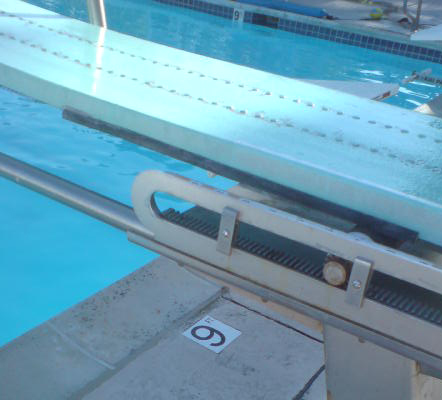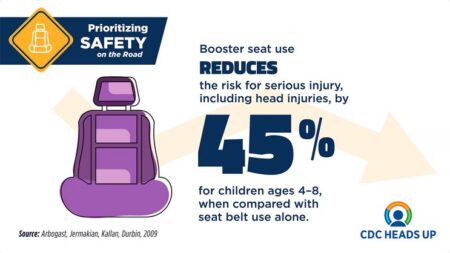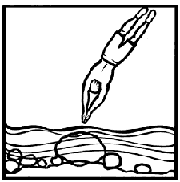Times to suspect a spinal injury:
(and use a jaw thrust instead of a head tilt, chin lift).
trauma that results in partial or complete paralysis, partial or complete loss of movement of any body part, numbness, tingling, intense stinging sensation or loss of sensation
(note that the numbness does not have to be an entire body part, it can be as simple as numbness when an injured person presses their thumb and first finger together.)
trauma that results in bumps, bruises or a depressed area on the head, neck or spine, blood-tinged or clear fluids leaking from the ear or nose, bruising around the eyes or behind the ears
a fall on land from a height greater than the victim’s height (or some sources say: a fall of greater than ten feet onto head or legs, or injury as a result of a fall greater than standing height). BUT a fall from a lower height still can cause a spinal injury.
a seemingly minor injury might actually be a spinal injury if the victim: appears frail or is older than 65 years of age, is not fully alert, or appears to be intoxicated
a seemingly minor injury might also actually be a spinal injury if the victim is less than three years old
a person holding his or her neck and/or head and/or complaining of weakness, pain, tingling or burning sensation in the extremities and / or losing balance or stumbling as they try to walk/stand
involved in a motor vehicle crash as an occupant or rider, (especially with significant intrusion into passenger’s space (side or even the roof).
involved in a motorized cycle, or bicycle crash as an occupant or rider,
a pedestrian hurt during the crash of a motor vehicle, motorized cycle, or bicycle
skiing or sledding or riding a bike into a fixed object (like a tree) or other sudden and violent deceleration
assault to head/neck with blunt object other than fist or feet (but fists or feet can cause a spinal injury)
cracked or broken helmet (bicycle, motorcycle, football, surfer’s, ski, hockey, industrial hard hat)
or wasn’t wearing one when they should have been
hockey accident such as skating into the boards or being checked from behind.
excessive flexion, as in when the chin is forced to the chest, fall that twists or bends the neck, for example bad landing on a trampoline, or while performing gymnastics
fall on buttocks that transfers force to spine
severe blunt force to head or trunk (hit by car)
injury that penetrates head or trunk including a gunshot, especially to the head, neck, chest, abdomen, back, or pelvis (lower part of the body/spine between the abdomen and the thighs)
has a head or neck injury, with or without bleeding, bruising
stabbing or impalement near the spinal column
thrown from a motor vehicle or horse (as many as 75% of passenger vehicle occupants totally ejected in a crash die)
incident involving a lightning strike or near strike
injury by rockfall or avalanche
found lying on the ground under a tree – assume they fell from the tree until you determine otherwise
found lying on the ground under or near a ladder – assume they fell from the ladder until you determine otherwise
broken windshield or deformed steering wheel
not wearing a seatbelt
impact with other passengers not seat-belted
lap style seatbelt only
infant or child found with shoulder seatbelt around neck
poorly adjusted or absent headrest in a rear-end collision
closed vehicle rollover
closed vehicle crash with death of another occupant
snowmobile or motorcycle under rope or wire
motorcycle accident with rider ejected or crushed between the bike and another vehicle
laid their motorcycle down to avoid striking a car
pedestrian hit by a vehicle who rolls onto the hood of the vehicle, and often hits the ground head first
– – – – – – – – – – – – – – – – – – – – – – – – – – – – – – – – – – – – – – – – – –
AIR BAGS
The National Highway Traffic Safety Administration, part of the U.S. Department of Transportation.
tells us that “Frontal air bags have saved more than 50,000 lives over a 30-year period.. . . Air bags are supplemental protection and are designed to work best in combination with seat belts. Both frontal and side-impact air bags are generally designed to deploy in moderate to severe crashes and may deploy in even a minor crash.
Air bags reduce the chance that your upper body or head will strike the vehicle’s interior during a crash. To avoid an air bag related injury make sure you are properly seated and remember—air bags are designed to work with seat belts, not replace them. And children under 13 should sit in the back seat.”
https://www.nhtsa.gov/vehicle-safety/air-bags
You should suspect a spinal injury when an air bag is deployed if:
a passenger had their feet on the dashboard when an accident happened and airbags deployed (in less than one-twentieth of a second, not enough time to move feet down from dashboard). Passenger’s knees, hips and legs can be forcefully pushed into their face or even strike their head, causing a traumatic brain injury. Facial and leg fractures, hip dislocations, spinal injuries have happened to passengers who had their feet up on the dashboard.
and in the case of:
infant or child in in front passenger seat and deployed airbag
small driver and deployed airbag
deployed airbag and no seat belt
– – – – – – – – – – – – – – – – – – – – – – – – – – – – – – – – – – – – – – – – – –
hanging or attempted hanging
found under collapsed building material or heavy debris (after an earthquake or…)
falling from or thrown from a mechanical bull – bucking machine (a study of injuries treated at US emergency departments noted that he highest proportion of mechanical bull-riding injuries involved patients age 20-29 years)
traumatic industrial accident / explosion
tumbling downhill without skis releasing (excessive extension or rotation)
spear tackling in football (using the head)
an injury from a collapsed rugby scrum
while participating in any sport, sustained a blow to their head, collided with another player or the ground/equipment
unconscious in water 5 feet deep or less (assume they dove into water that was not deep enough to be safe and hit their head on the bottom)
any injury caused by an entry, especially head first dive, into shallow water or fast moving water (river)
diving or jumping mishap or entering water from a height, involving a diving board, water slide
jumped on by someone entering the pool at the side who did not see the person swimming underwater along the side
diving or jumping mishap or entering water from a height, involving an embankment, jetty, pier, bridge, cliff or tower
(People jump from a tall rock/cliff at the edge of a lake miles into the wilderness (and miles from quick help) in Grand Teton National Park.
“At approximately 3:30 p.m. on Monday, (August 8, 2022) Teton Interagency Dispatch Center received a call from a party reporting their friend, a 22-year-old female, had hurt her back after she jumped into Phelps Lake from the rock feature known as “Jump Rock.” The patient was unable to walk more than a few steps. Park rangers were flown via the Teton Interagency helicopter to Phelps Lake to evaluate the patient … “)
note that
 You can’t always expect a helicopter rescue
You can’t always expect a helicopter rescue
diving onto a floating or submerged object/person/sandbar (at the water surface or underwater)
striking the water with a high impact (falling while water skiing or surfing, or impact with water on an imperfect dive from a great height)
hit by a boat, personal watercraft, skier, surfer, ski, or surfboard
receiving a blow to the head, including colliding with another swimmer or when plunging head-first into a breaking wave or shallow water
any trauma situation where the victim
stays unconscious, is not fully alert or you have any doubt
Remember that another painful injury, especially with bleeding they can see,
may distract the victim and you from their more serious spinal injury
and someone with altered mental status (under the influence of alcohol or drugs)
may be less able to recognize they have a spinal injury.
– – – – – – – – – – – – – – – – – – – – – – – – – – – – – – – – – – – – – – – – – – – – – – – – – – – – – – – – – –
A wilderness first responder course listed these as the main Mechanisms Of Injury (MOI) to consider as indicating a spinal injury:
“Trauma to the head associated with loss of responsiveness/altered mental status
High velocity impact (e.g., car/ATV crash, climbing falls, high speed skier/biker crashes)
Falls from greater than 3 feet (1 meter) landing on the head, or buttocks (axial load)
Falls for a patient over 65 years of age.”
– – – – – – – – – – – – – – – – – – – – – – – – – – – – – – – – – – – – – – – – – – – – – – – – – – – – – – – – – –
The use of cell phones for photography (with or without a selfie stick) has made preventable injury or even death by selfie common They were just taking a selfie.
There is fascinating reading on how climbers can avoid injuries/stay alive, by Yosemite Search and Rescue Ranger John Dill,
(including sections on environmental dangers, descents, big wall bivouacs, unplanned bivouacs, loose rock, climbing unroped, leading, falling, learning to lead, the belay chain, helmets, states of mind, rescues, and risks, responsibility and the limits of climbing), at climbing advice.
– – – – – – – – – – – – – – – – – – – – – – – – – – – – – – – – – – – – – – – – – – – – – – – – – – – – – – – – – –
Note that this list is quite long, but might not include every cause you could encounter – it is for my first aid students to review and for discussion in class and is not complete instruction in recognizing a spinal injury.
– – – – – – – – – – – – – – – – – – – – – – – – – – – – – – – – – – – – – – – – – – – – – – – – – – – – – – – – – –
Spinal injury prevention at pools includes:
Obey all “No Diving” signs
· Enter feet first (with bent knees and flat feet) at all times unless you are very familiar with the swimming area.
Most backyard pools and hotel pools are too shallow for safe diving and will often have tiles with a no diving drawing as well as signs with rules:

Lakes can have hidden obstructions even if the depth seems sufficient:
·Enter headfirst only when the area is clearly marked for diving and has no obstructions.
___________________ water depths under diving boards ___________________
(from the Red Cross Water Safety Instructor’s manual, 2009) Minimum depth of water under a 1 meter diving board directly under the tip of the board should be 11 feet 6 inches. Minimum depth to teach diving from the side of the pool should be 9 feet. Goggles should never be worn during teaching of head first entries.
By any standards, the diving board pictured below is not safe because the water below it is not deep enough:

This is from a page of more potential diving board and slide rules.
___________________________________________
Good swimmers are likely to think they don’t need a lifeguard.
Some people are even offended at having to follow supposed safety rules. If they have done dangerous things before and not been hurt they are likely to want to be able to continue the same fun things.
Studies tell us why someone would, for example, dive into a pool
with a sign that said No Diving:
1) The familiarity effect; people who have done a lot of diving with no harm are less likely to comply with warnings. If your personal experience is that it has been safe for you, you gauge your future risk as low. Swim team members are among those most likely to ignore a warning sign.
This can be affected as well by never having known anyone who was paralyzed by a diving accident. Younger people in general do not have as many life experiences that tell them that warning signs might be valid.
2) People who are aware of a hazard decide they can minimize risk by trying to be safe. A diver knows that the water is shallow, but decides to try to attempt a dive with a shallow trajectory. Unfortunately, you have little control over dive angle.
3) Everyone else is doing it. If some people are diving where they should not it is more likely that others will as well, even with signs warning them not to.
4) Your internal reasons.
Some people are risk takers and are willing to risk the consequences. Disability and even death can result from a poorly done dive, but these results do not seem as likely to some people as to others.
Some people don’t like to have their behavior limited by orders from the manufacturer of a product or the manager of a pool.
__________________________________
Diving boards seem to invite more risky behavior and have even been shut down at some pools.
These rules are common for diving boards and must be followed in De Anza aquatics classes:
Only one bounce allowed on the diving board.
Only one person on the diving board at a time. This means people should wait at the bottom of the ladder until the person jumping or diving has done so, and should not approach the end of the board until the swimmer is clear.
Don’t run on the board or attempt to dive a long way through the air.
Swim away from the board immediately after diving so you aren’t a hazard for the next diver and so you are safe if the next diver doesn’t make certain the water is clear.
Jump or dive only from the end of the board. Don’t use the guardrails for gymnastics. Trick dives only with permission.
Do not mix alcohol with swimming, diving or boating. Alcohol impairs your judgment, balance, and coordination, affects your swimming and diving skills, and reduces your body’s ability to stay warm.
A Canadian survey of drownings over a decade found that for people “15 years and older, alcohol was associated with 40% of drownings, however, since the presence of alcohol was unknown for another 25%, the true figure could be as high as 65%. Nearly 60% of the blood alcohol levels above the legal driving limit of 80 mg% were higher than 200 mg%; 18% were above 300 mg%.”
Water depth must be at least 9 feet when learning head-first entries from the deck (or deeper if state or local regulations require).
You should be physically and psychologically ready to do the skill. As you go along through the steps of learning to dive, if you find yourself unable to do a next step you should practice the preceding step until you gain confidence.
You should be able to demonstrate correct hand, arm and head position before trying to do a head-first entry. One way to do this would be to hold the arms over the head and in line with the body on a forceful push and glide from the pool side under water.
NEVER perform a head-first entry
Over stationary objects
Over any hard device, such as a pole
Through inner tubes or hoops
___________________________________

The Centers for Disease Control and Prevention (CDC) offers info on choosing the proper child seat for each age of child at:
cdctransportation.org/www.cdc.gov/transportationsafety/child_passenger_safety/index.html

– – – – – – – – – – – – – – – – – – – – – – – – – – – – – – – – – – –
(Note to on-line users not in my classes: this is a study sheet. It is not complete instruction in the topic named in the webpage title.)
The author of this webpage, (written as a homework reading assignment for my students), does not give any warranty, expressed or implied, nor assume any legal liability or responsibility for the accuracy, completeness, or usefulness of any information, product, or process included in this website or at websites linked to or from it. Users of information from this website assume all liability arising from such use.
– – – – – – – – – – – – – – – – – – – – – – – – – – – – – – – – – – –
